Abstract
Carter and Werner recently reviewed the literature on conditional discrimination learning by pigeons, which consists of studies of matching-to-sample and oddity-from-sample. They also discussed three models of such learning: the “multiple-rule” model (learning of stimulus-specific relations), the “configuration” model, and the “single-rule” model (concept learning). Although their treatment of the multiple-rule model, which seems most applicable to the pigeon data, is generally excellent, their discussion of the other two models is incomplete and sometimes inaccurate. Potential problems of terminology are discussed in the present paper, as are additional lines of research that deserve consideration by those interested in further work in this area. The issue of response versus stimulus selection (configuration versus compound-cue learning) is discussed in connection with the configuration model. Particular attention is given to Carter and Werner's criticism of the application, in studies with other species, of the learning set procedure in testing for single-rule learning. Some of the important related issues are: the bias for improvement on new problems in a series, the adequacy of a multiple-rule model to explain learning set formation, and evidence in favor of the single-rule model, at least in primates. Consideration of these additional contributions to the study of conditional discrimination learning emphasizes the usefulness of this task in the comparative study of cognitive processes.
Keywords: conditional discrimination, matching-to-sample, oddity-from-sample, concept learning, learning set formation
Full text
PDF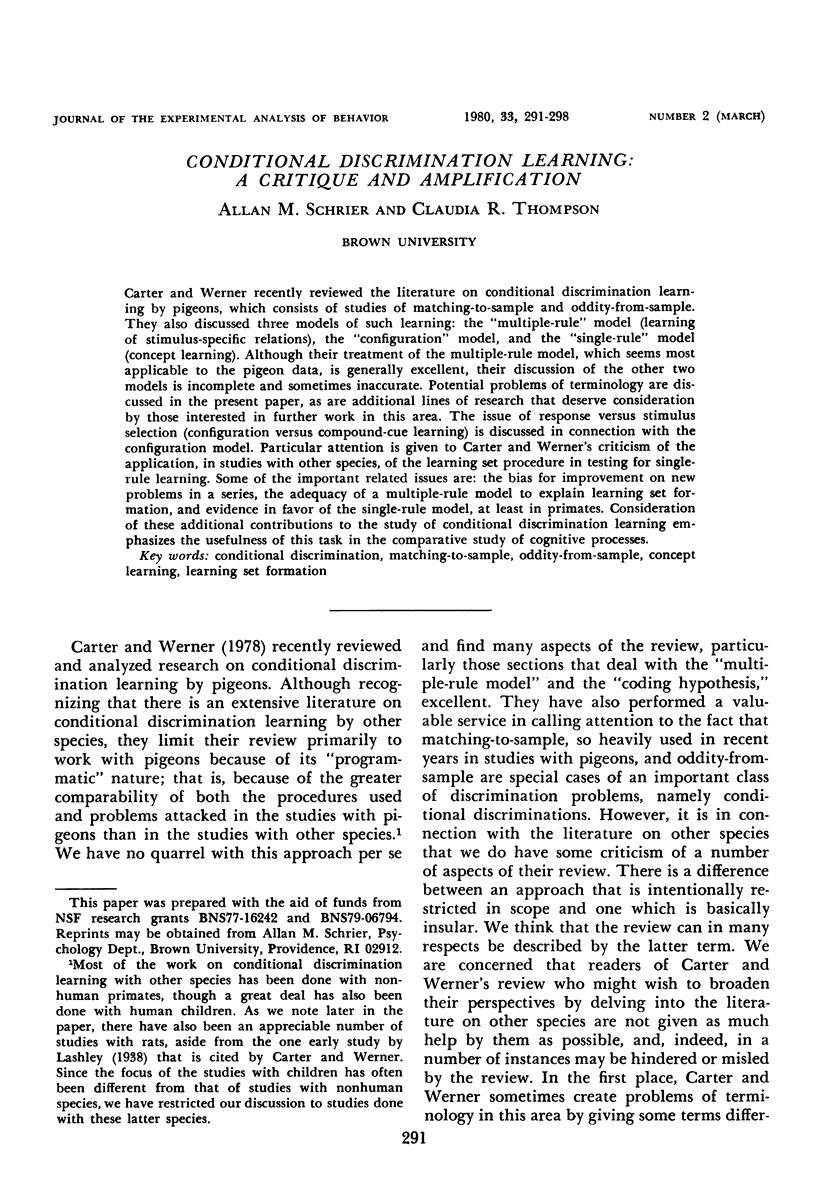
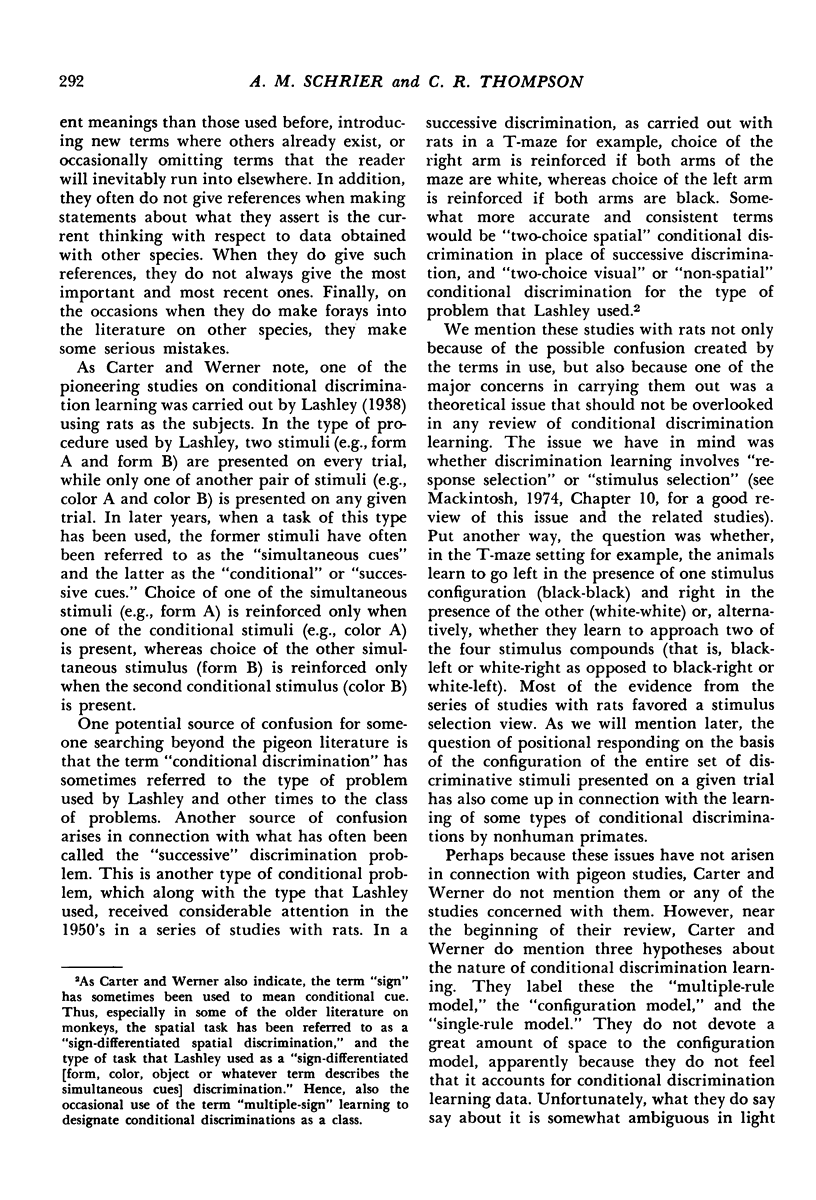
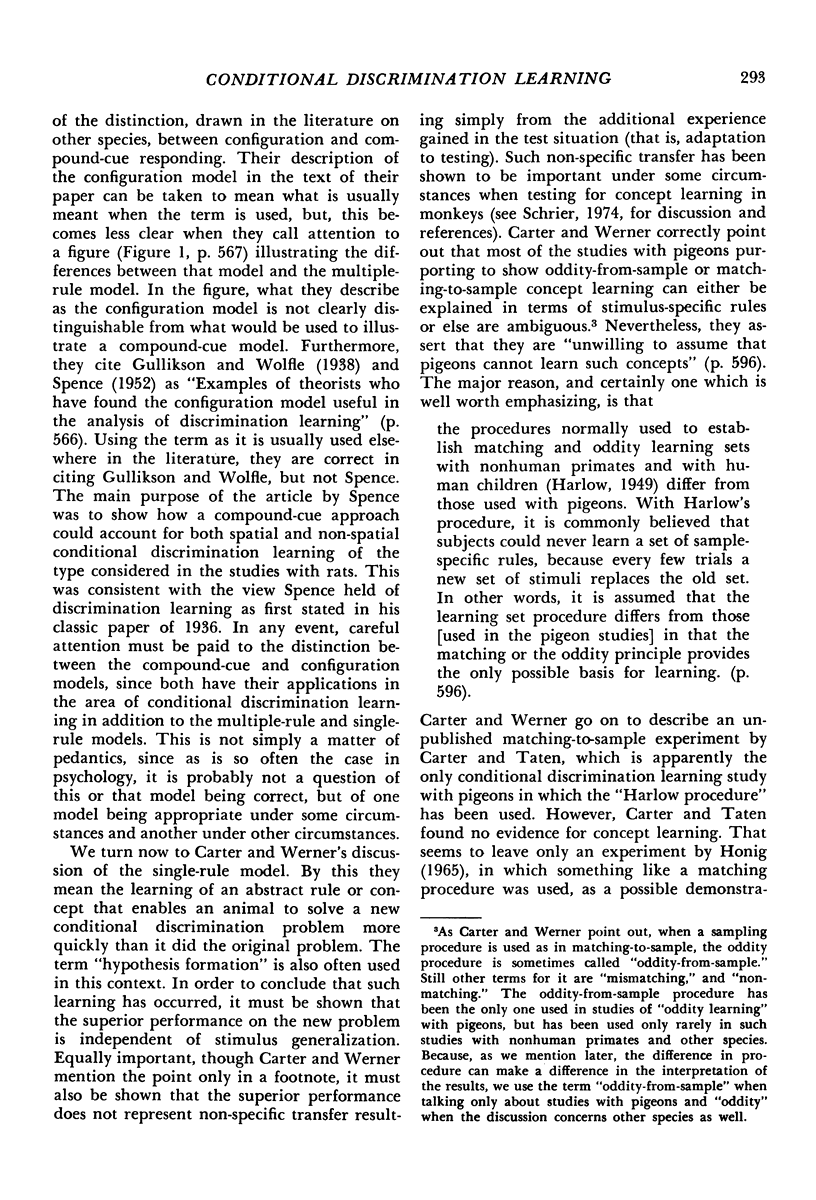
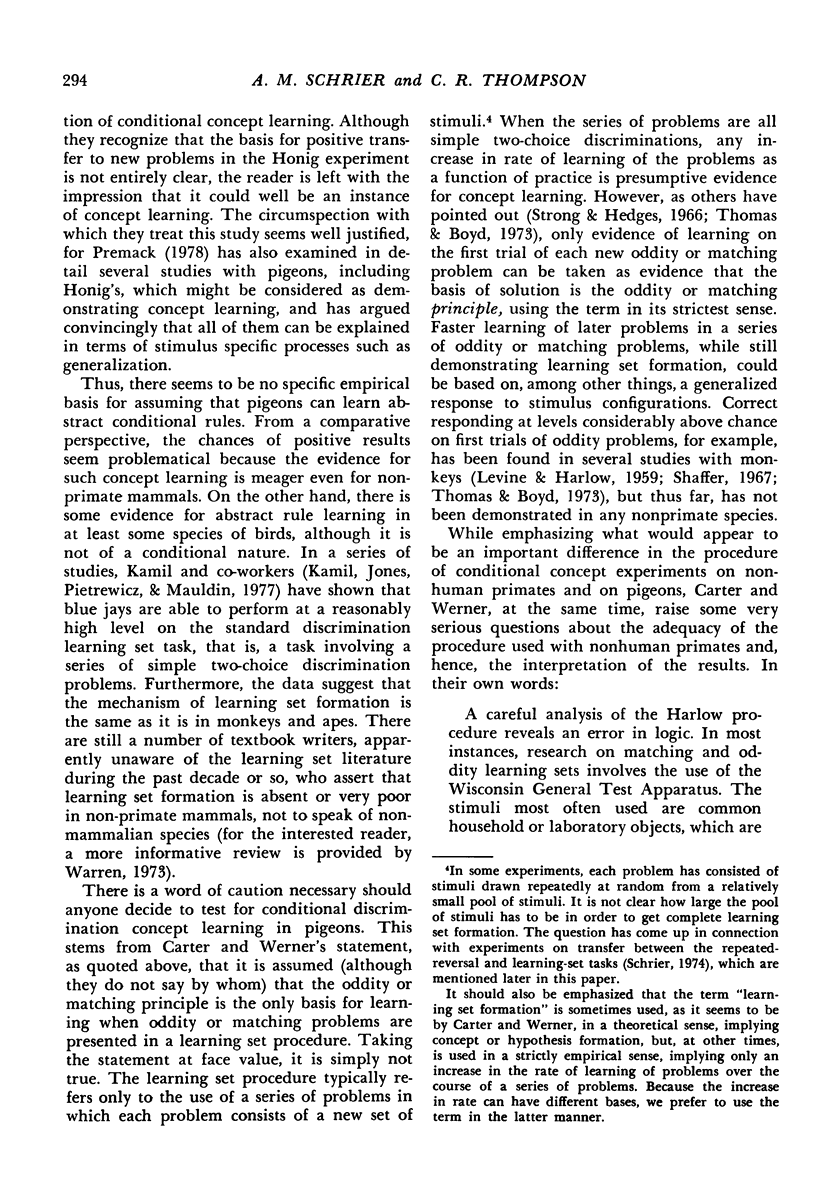
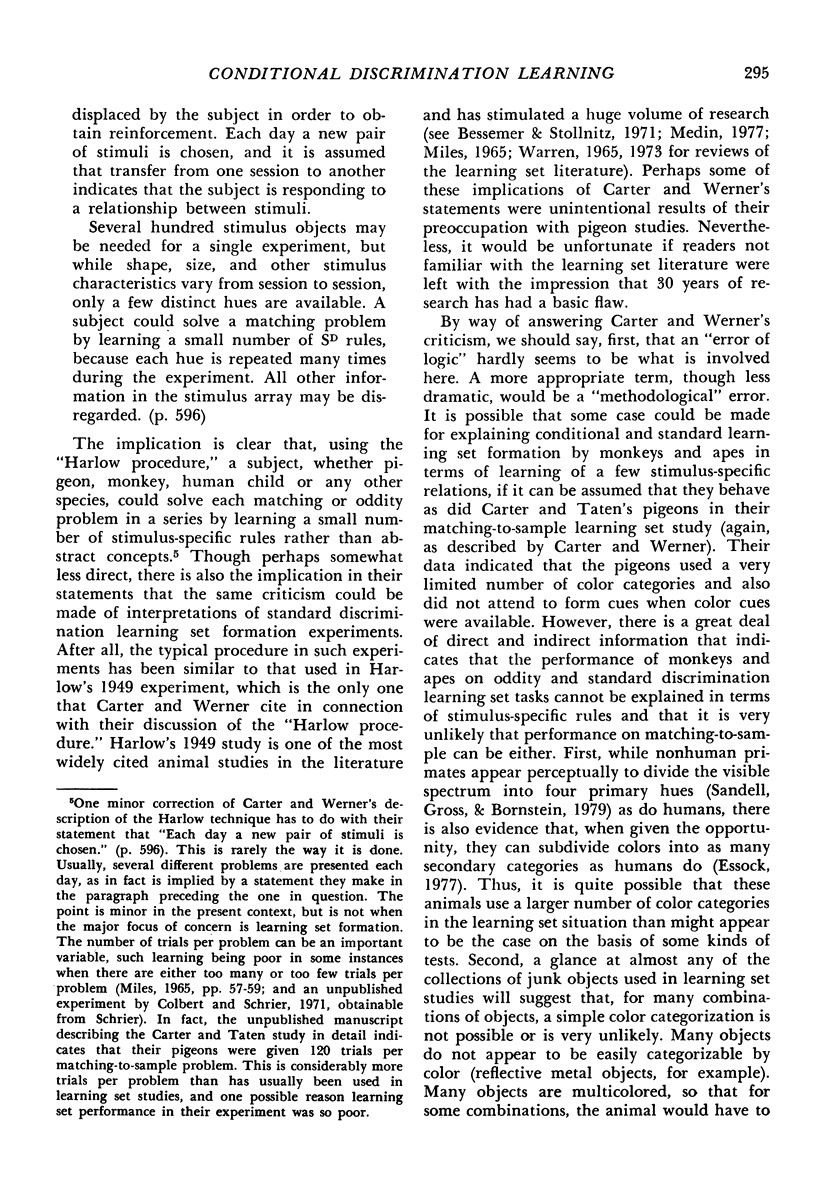
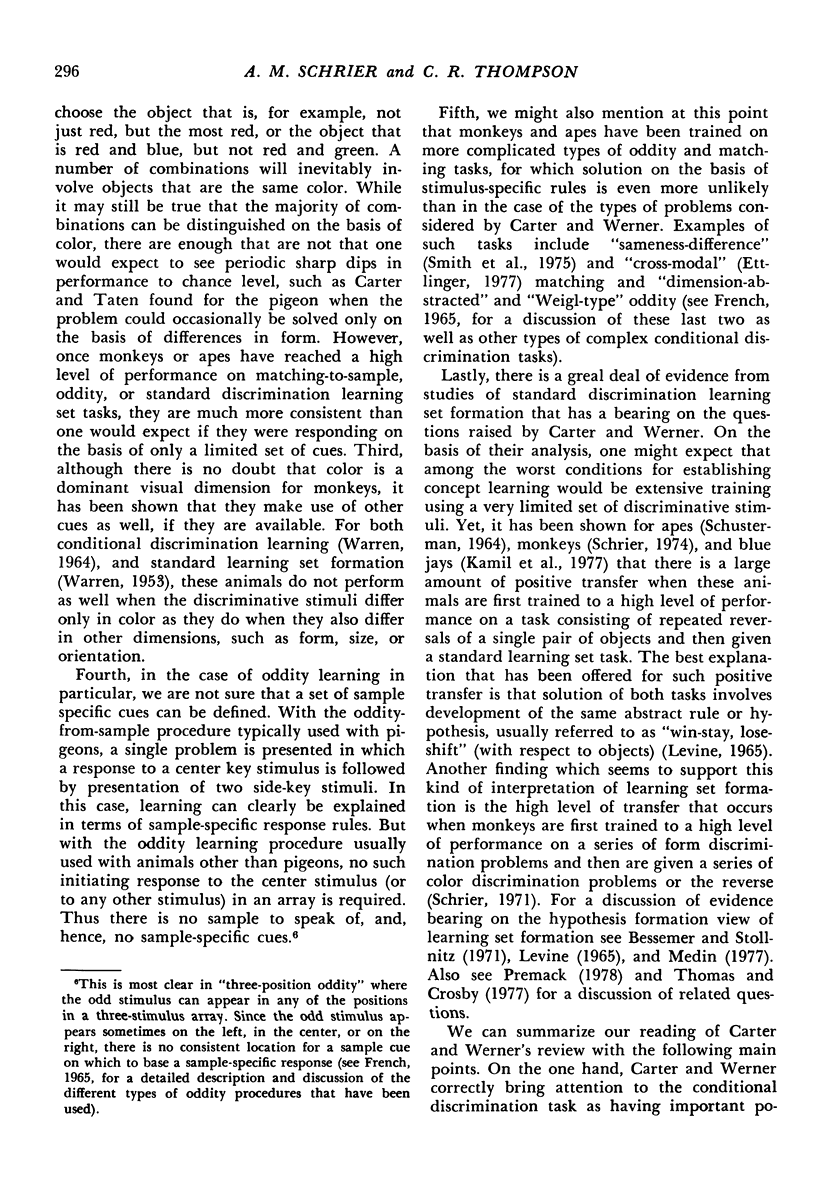
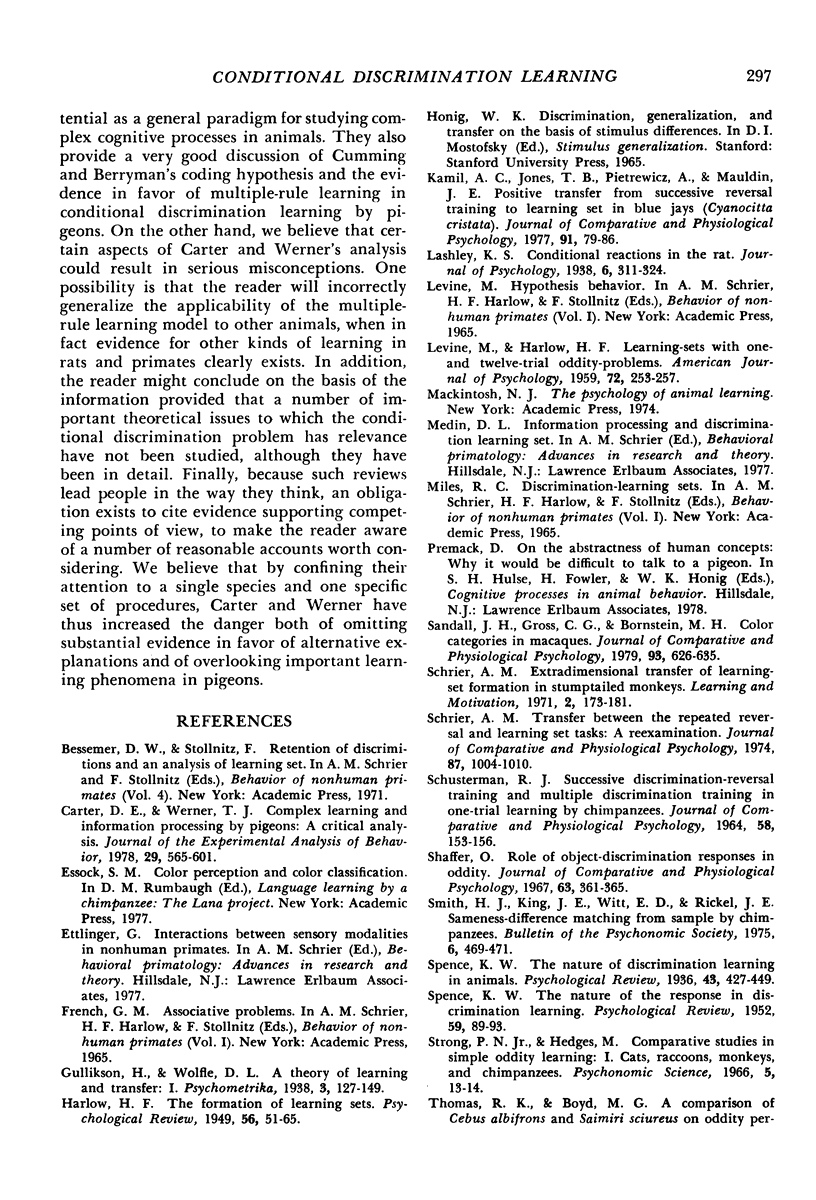
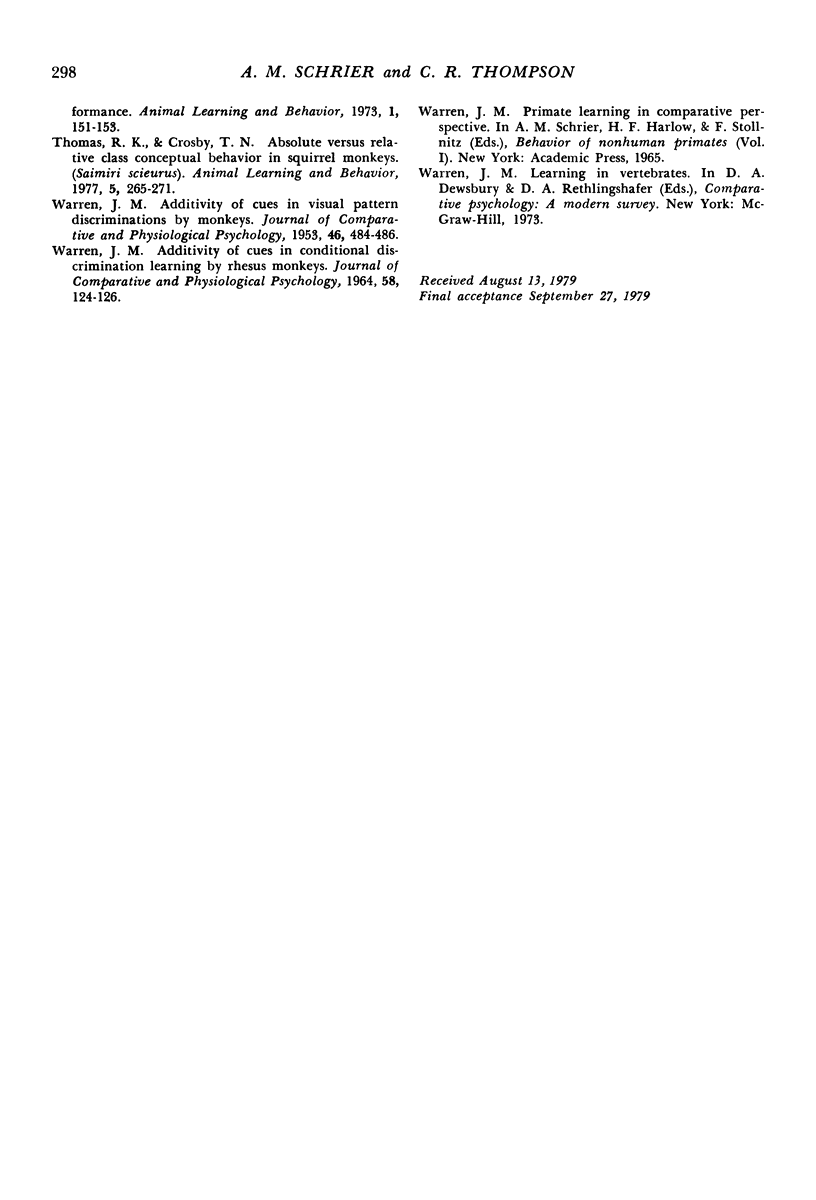
Selected References
These references are in PubMed. This may not be the complete list of references from this article.
- Carter D. E., Werner T. J. Complex learning and information processing by pigeons: a critical analysis. J Exp Anal Behav. 1978 May;29(3):565–601. doi: 10.1901/jeab.1978.29-565. [DOI] [PMC free article] [PubMed] [Google Scholar]
- SCHUSTERMAN R. J. SUCCESSIVE DISCRIMINATION-REVERSAL TRAINING AND MULTIPLE DISCRIMINATION TRAINING IN ONE-TRIAL LEARNING BY CHIMPANZEES. J Comp Physiol Psychol. 1964 Aug;58:153–156. doi: 10.1037/h0044309. [DOI] [PubMed] [Google Scholar]
- SPENCE K. W. The nature of the response in discrimination learning. Psychol Rev. 1952 Jan;59(1):89–93. doi: 10.1037/h0063067. [DOI] [PubMed] [Google Scholar]
- Sandell J. H., Gross C. G., Bornstein M. H. Color categories in macaques. J Comp Physiol Psychol. 1979 Aug;93(4):626–635. doi: 10.1037/h0077594. [DOI] [PubMed] [Google Scholar]
- Shaffer O. Role of object-discrimination responses in oddity. J Comp Physiol Psychol. 1967 Apr;63(2):361–365. doi: 10.1037/h0024377. [DOI] [PubMed] [Google Scholar]
- WARREN J. M. ADDITIVITY OF CUES IN CONDITIONAL DISCRIMINATION LEARNING BY RHESUS MONKEYS. J Comp Physiol Psychol. 1964 Aug;58:124–126. doi: 10.1037/h0047425. [DOI] [PubMed] [Google Scholar]
- WARREN J. M. Additivity of cues in visual pattern discriminations by monkeys. J Comp Physiol Psychol. 1953 Dec;46(6):484–486. doi: 10.1037/h0055613. [DOI] [PubMed] [Google Scholar]


